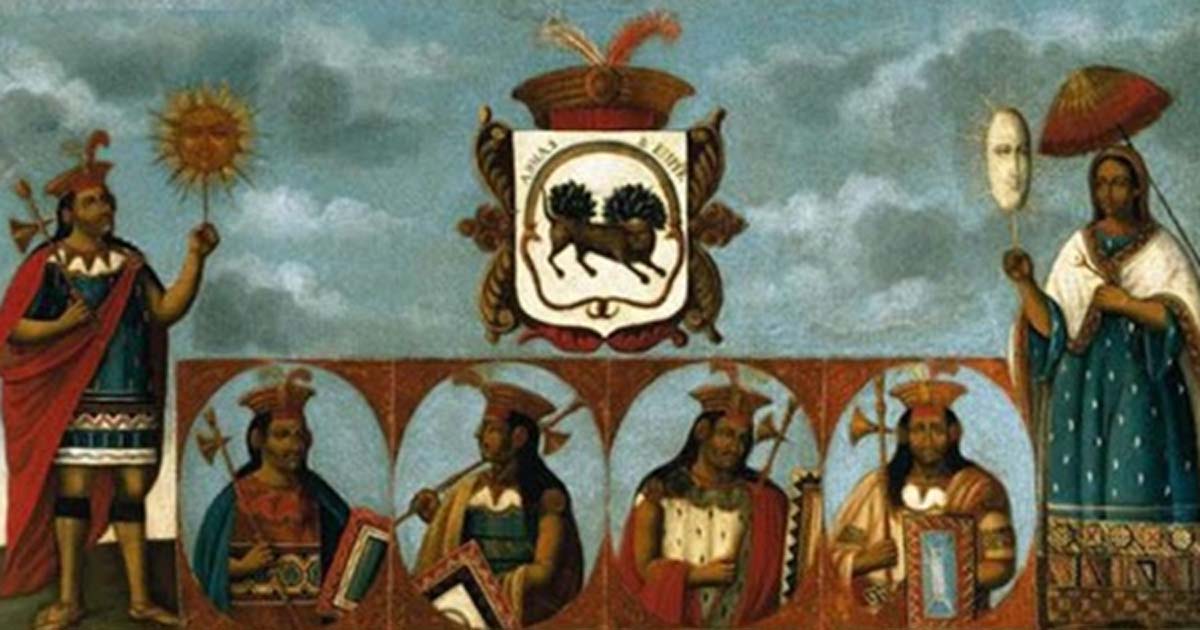Creation Myths Hold Hard Facts About Our Ancient Origins
The largest pre-Hispanic civilization in the Americas was the Inca Empire and from their capital city of Cusco, rulers known as Sapa Inka (Quechua for "the only Inca”) controlled a vast territory known as Tahuantinsuyo, which extended from the south of Colombia to the west of present-day Argentina. Specialists have long argued over the Inca’s origins as two conflicting creation myths provide details of two distant places. But now, two scientists have settled this long-standing argument after testing DNA from modern-day descendants of Inca emperors.
Two Myths of Creation
An AFP.com article reported that it was “a fascination of the Inca’s organizational skills and their mastery of engineering” that led scholars Ricardo Fujita and Jose Sandoval of Lima's University of San Martin de Porresit to help settle which of the two creation myths was more accurate.
One story claims the Inca royal family was seeded by a semi-divine couple who travelled north to Cuzco from Lake Titicaca, in Peru's Puno region (modern day Bolivia) and the second tells of a group of semi-divine brothers emerging from a mountain cave located in the Pacaritambo region near Cusco.
- Who Built the Fascinating Ñaupa Iglesia? Mysterious Ruins in the Sacred Valley of Peru
- The Dramatic Life and Death of Atahualpa, the Last Emperor of the Inca Empire
- New Inca Ceremonial Complex Discovered in Peru May Contain Evidence of Human Sacrifice

Lake Titicaca, on the modern day Bolivia-Peru border. (Public Domain)
Can the DNA Settle it?
Fujita and Sandoval built a genetic profile of the Inca rulers descendants attempting to “reveal whether there was a unique Inca patriarch” and Fujita told reporters at AFP "It's like a paternity test, not between father and son but among peoples.”
DNA samples were gathered and studied from inhabitants of both places mentioned in the myths and it was “After three years of tracking the genetic fingerprints of the descendants,” the scientists were able to confirm that both creation myths were based in reality! Sandoval reported that the two legends were “actually linked” and summarizing their findings he said:
"The conclusion we came to is that the Tahuantinsuyo nobility is descended from two lines, one in the region of Lake Titicaca, the other around the mountain of Pacaritambo in Cusco.”
The Inca Ancestral Way
The Incas had developed advanced agricultural systems and had amassed such a surplice of resources and wealth that they had the time to create vast stone temples, road networks and cities, including the UNESCO World Heritage Site Machu Picchu, a popular mountain-top city and temple complex in modern-day Peru.

Manco Capac, First Inca King, Brooklyn Museum. ( Public Domain )
Astronomy was the Inca’s way of recording passing time and observations of the motions of the Milky Way and planets were made from the Coricancha Temple of the Sun at Cusco, which was regarded as the “navel of the earth.” From this gold-plated, highly sacred location, astronomical conditions at key stages of agricultural cycles were monitored and became mythologized into stories, which tell of the movements of constellations and planetary formations, ensuring the successful cultural transmission of key survival information during times of social upheaval, regime changes and natural catastrophes.
- Lake Titicaca: The Cauldron of Incan Creationism
- The Ancient Ruins On and Beneath the Sacred Lake Titicaca
- Inti, Sun God of the Inca, Spawned the First Rulers of An Unforgettable Empire

Coricancha and the Convent of Santo Domingo, Cusco, Peru. (CC BY-NC 2.0)
The DNA and the Myths
The biggest problem facing researchers until Fujita and Sandoval came along was that the Spanish conquistadors, who arrived 1532, burned Inca records. Only a handful of Spanish missionary priests wrote down and tried to interpret Inca creation myths and although the hierarchy of spirits, gods and goddesses is relatively well understood, the actual origins of the Inca people was lost in time.
Now that scientists have settled the physical origins of the Inca rulers, they intend to go much further back in time aiming to test the DNA of ancient relics like mummies. Fujita told reporters that researchers are now looking for where "the Incas most direct descendants are buried in order to trace their history” and that he personally aims to "form the most complete picture of the origin of the most important pre-Hispanic civilization.”
If the two scholars successfully gather then analyze DNA from mummified Inca ancestors they would effectively launch an entirely new field of archaeological and anthropological research, but a wall lies just ahead of them. Not only did the Spanish conquistadors burn written records, but they also burned mummies before melting down their golden coffins.
Top image: Genealogy of the Incas by Cuzco School. 18th or early 19 th century. (Public Domain)
By Ashley Cowie




















Comments
Maybe they burned the Jesuit missionary writings taken down at first hand from Inca people.
It is held as a consensus among historians that the peoples of the Inca Empire, unlike the Maya and Aztecs, had not developed a writing system. They had created recording devices based on knots in strings, the quipus, but these were more like systems to record quantities and numbers than writing systems in order to write stories and narrative down. So, how did the Spaniards burn their written records in 1532, as the text asserts? They certainly had quipu-based numerical records, but not their history and myths written in records.